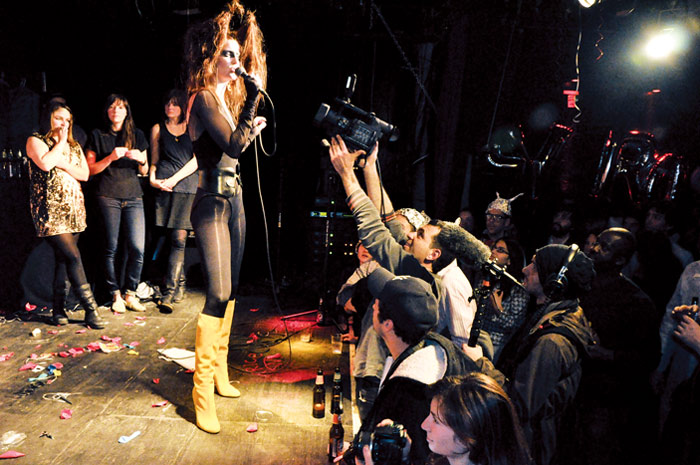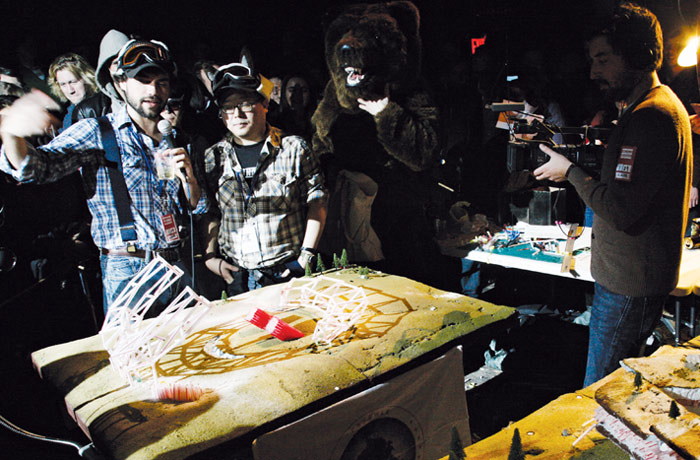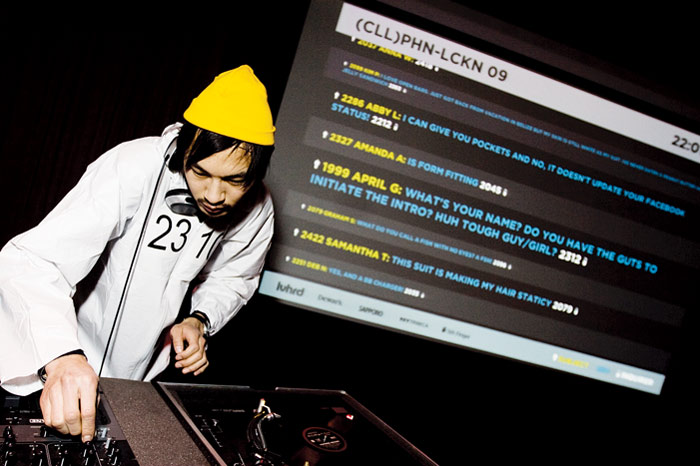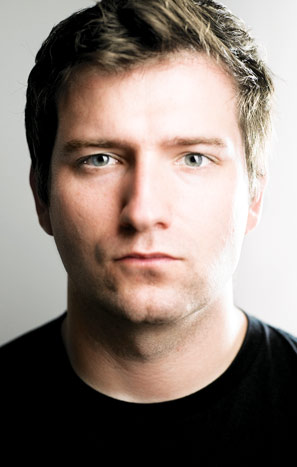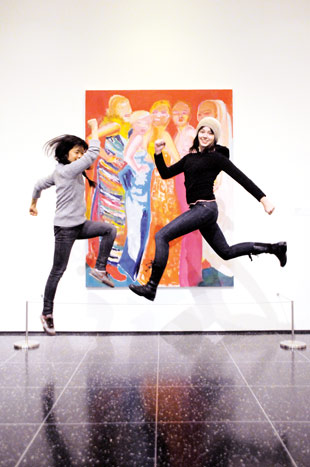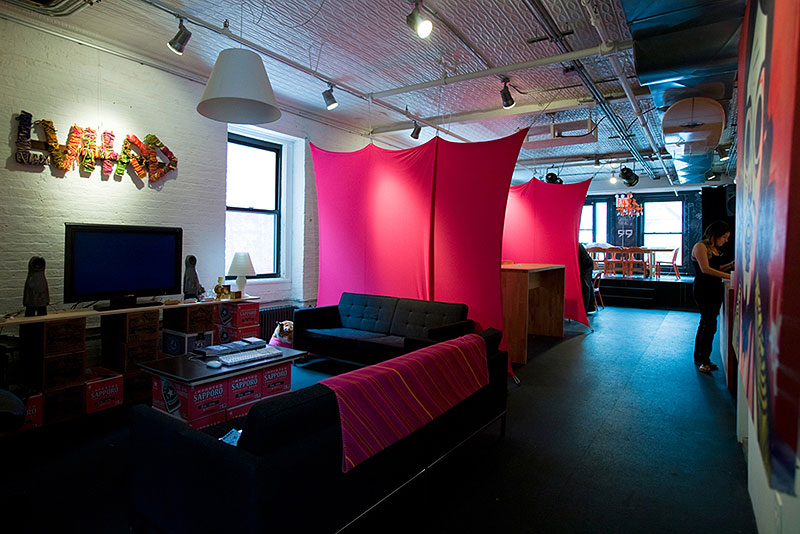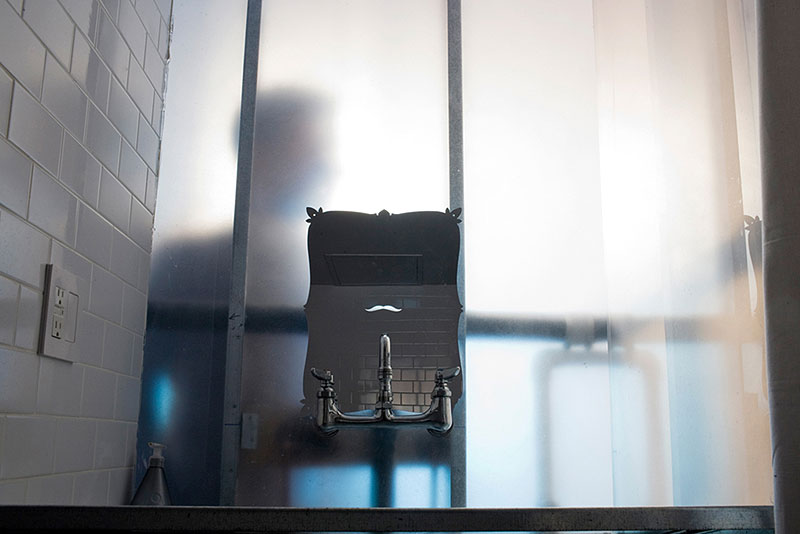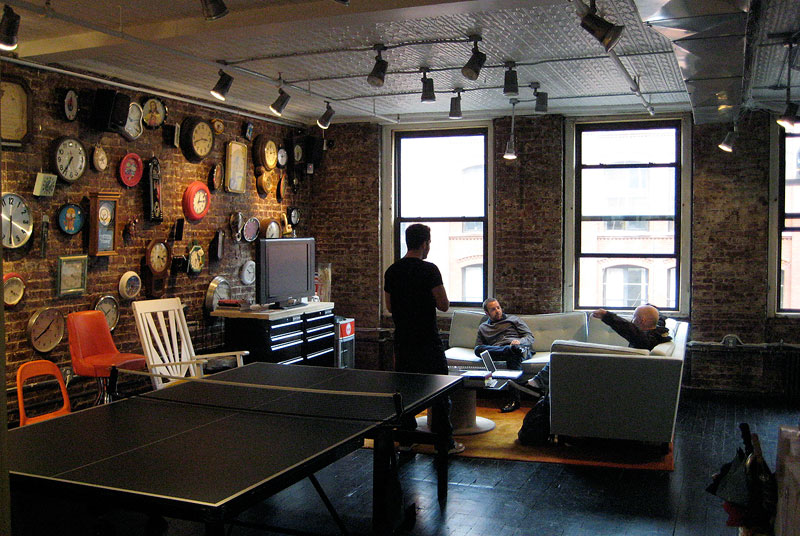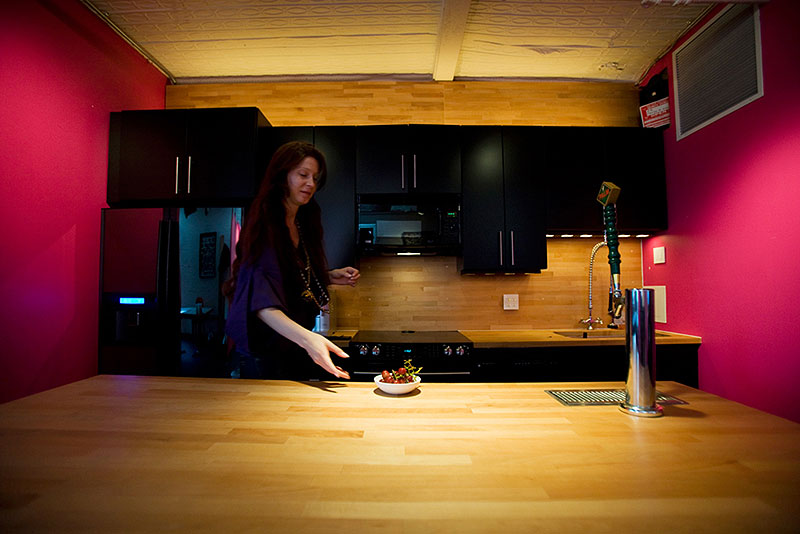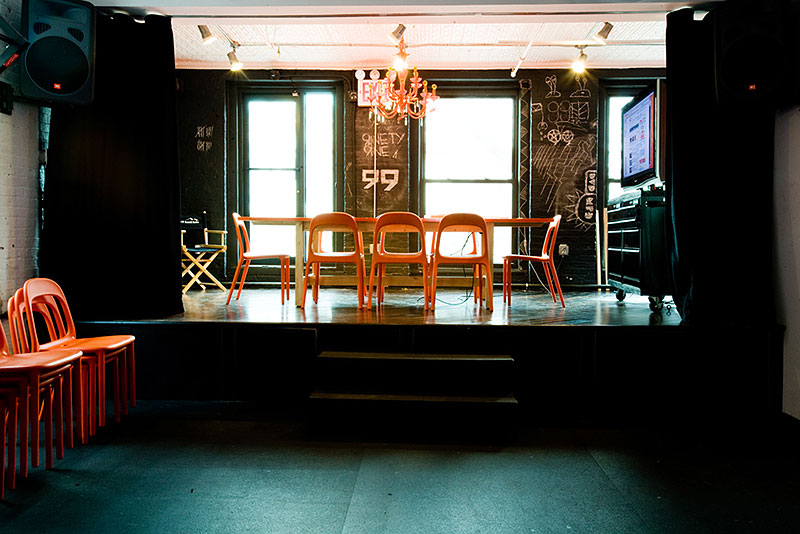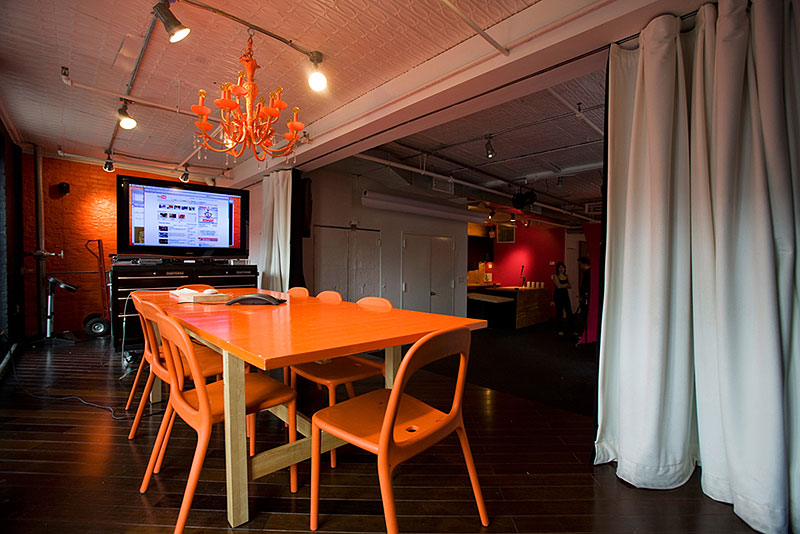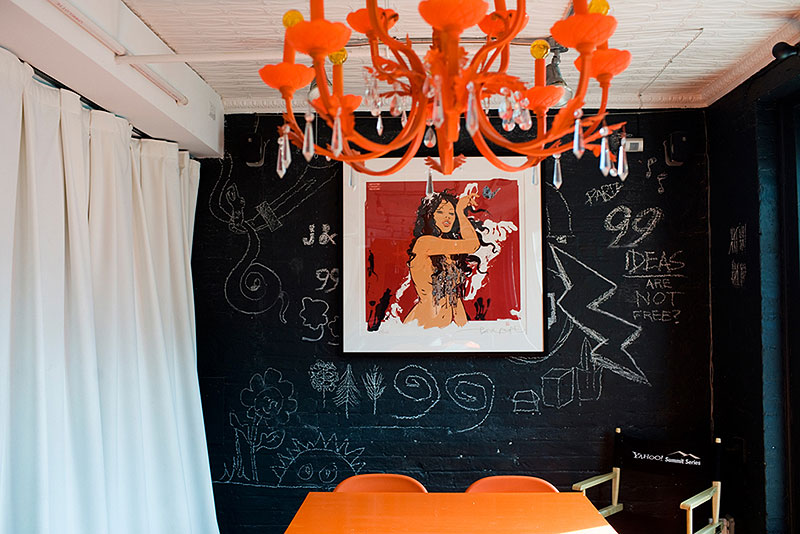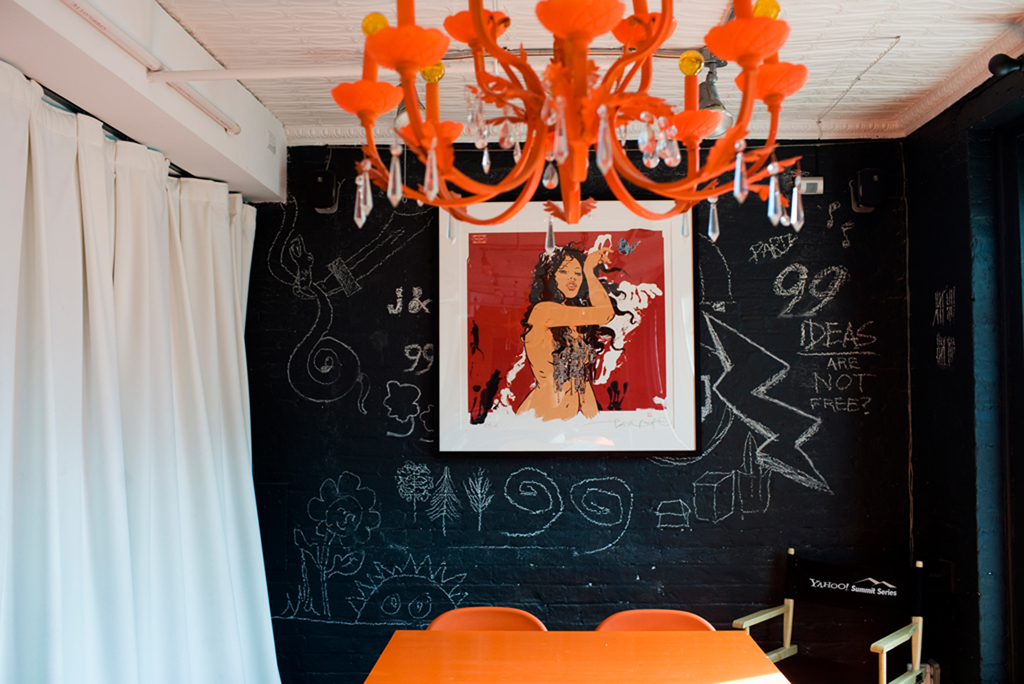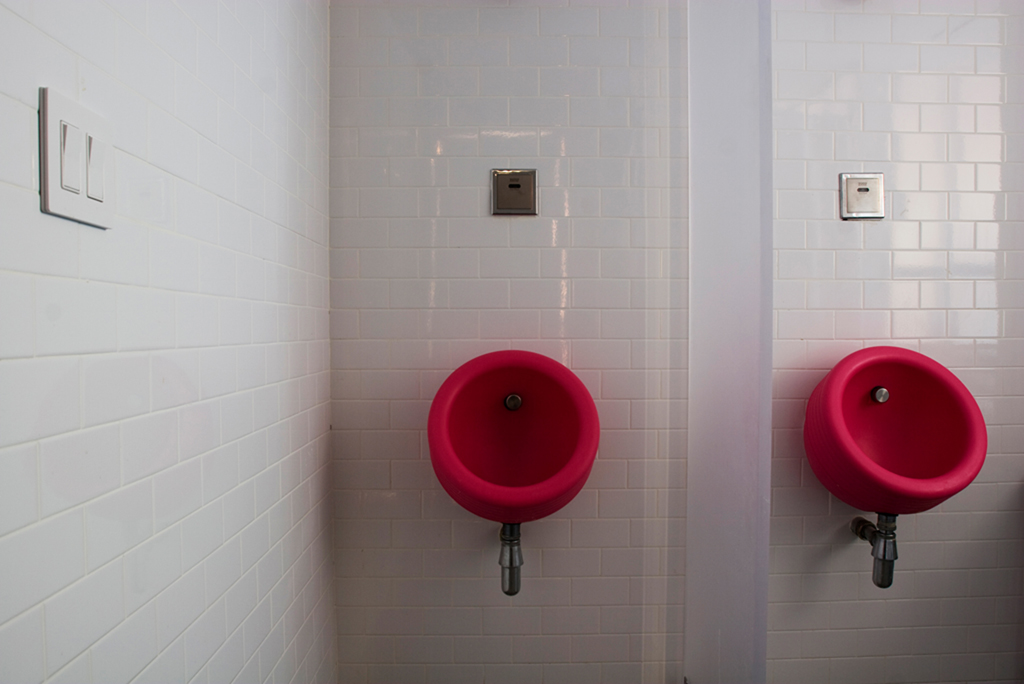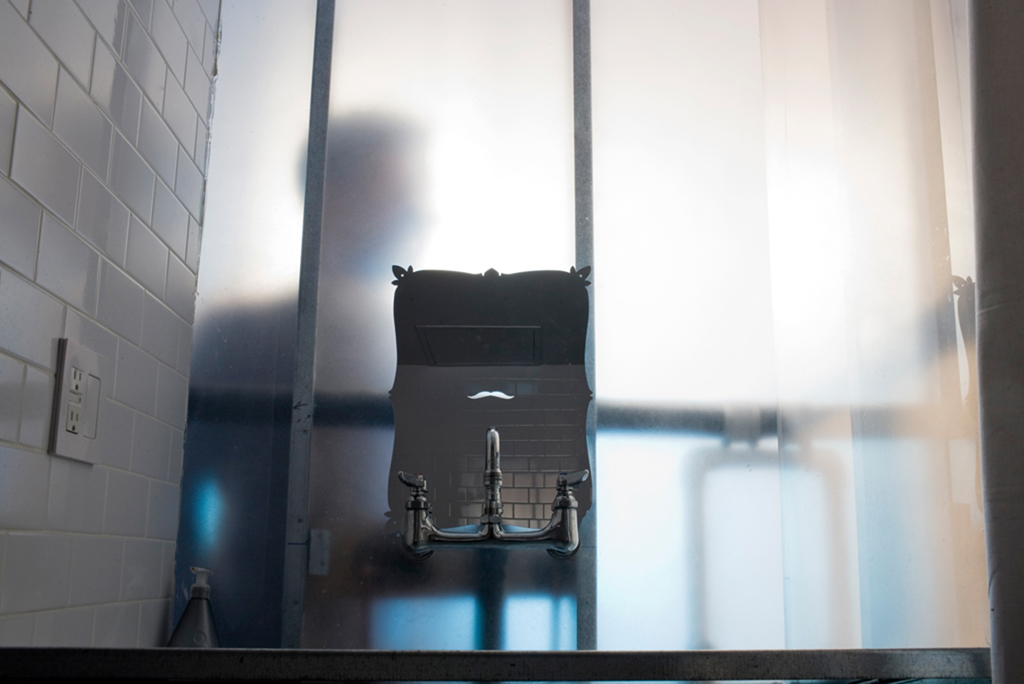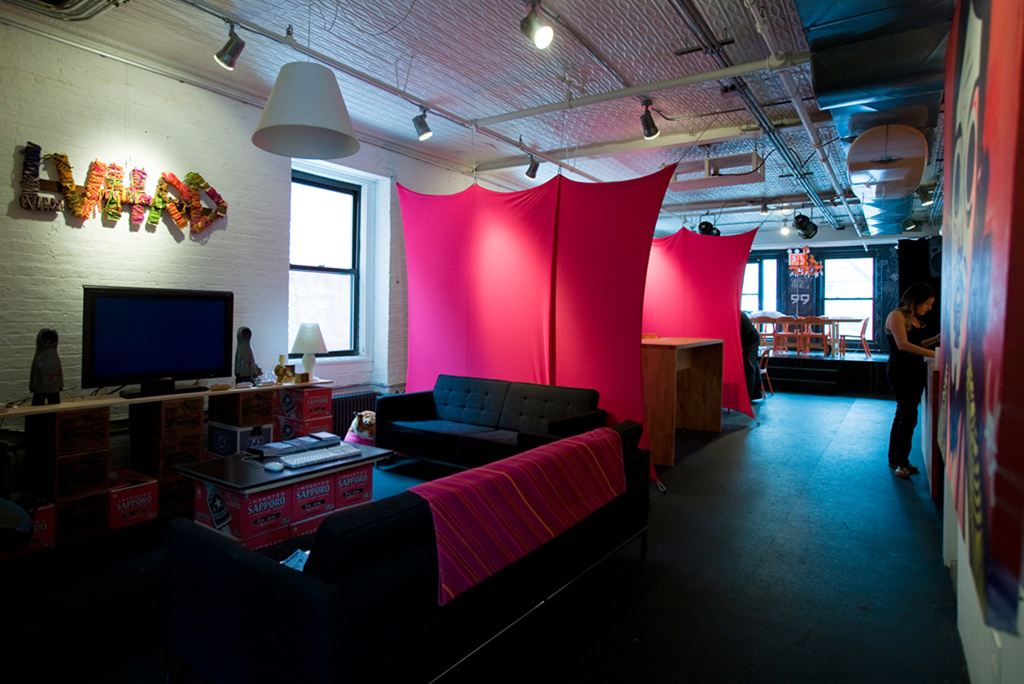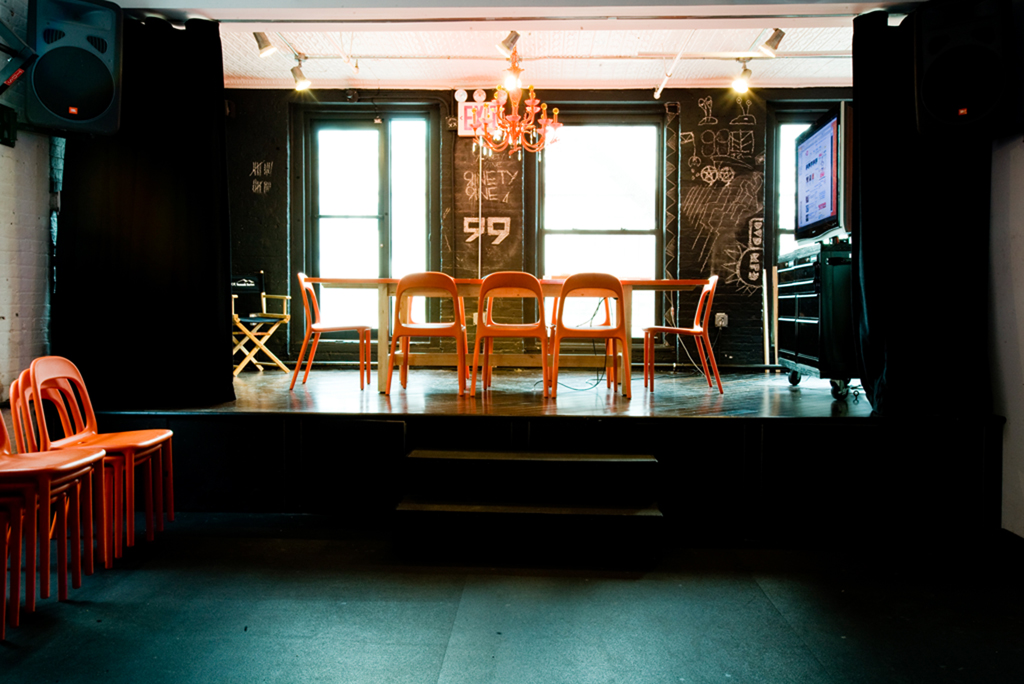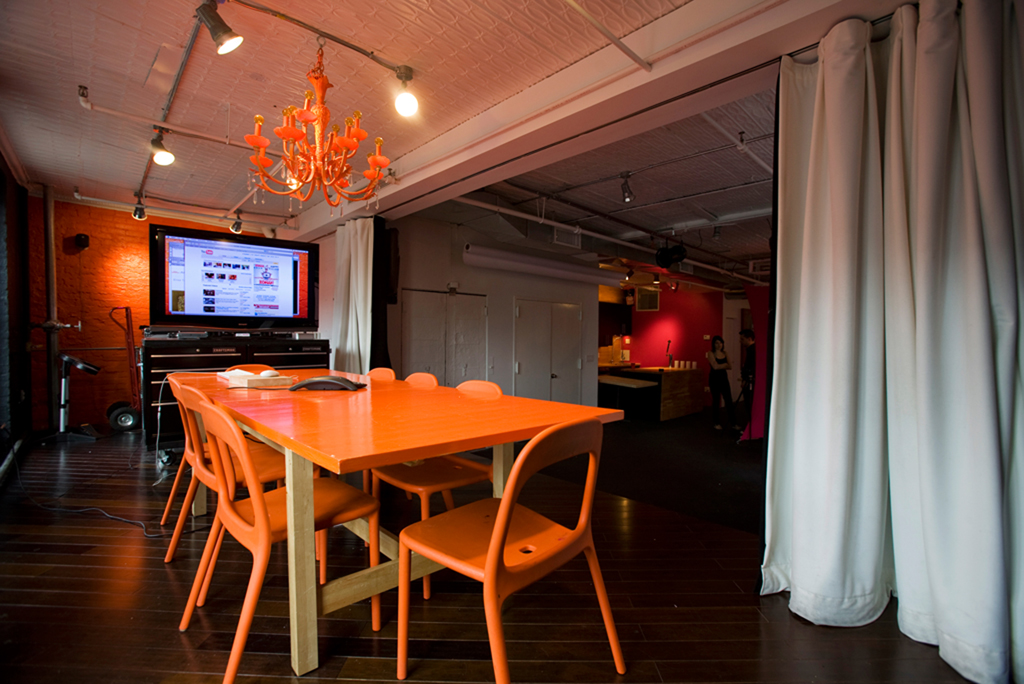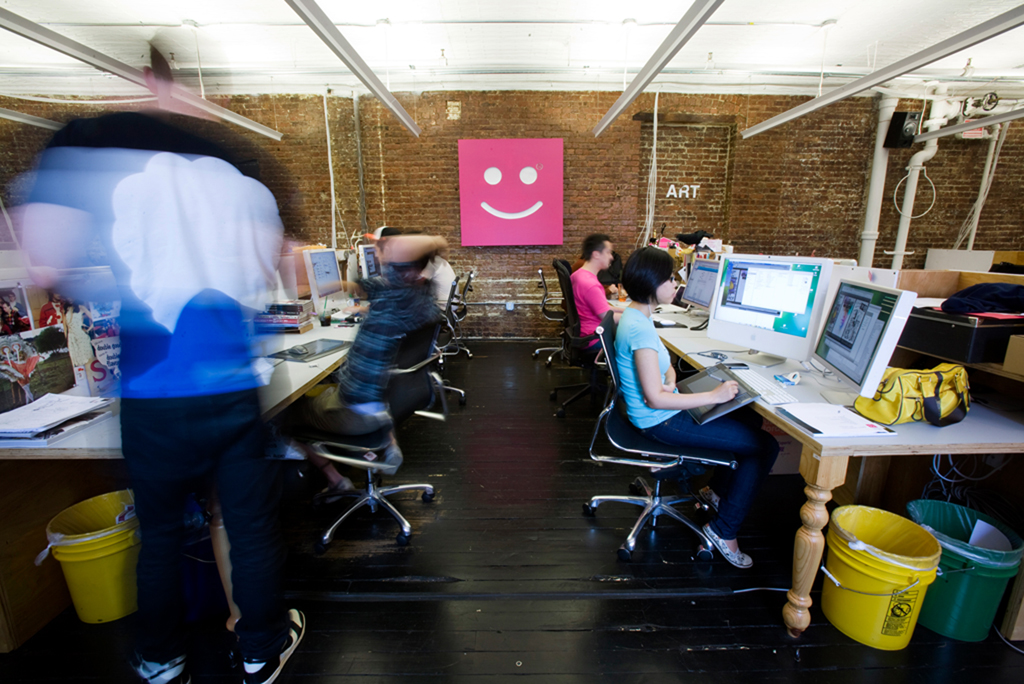This weekly feature spotlights a wide variety of people who live and work on the Lower East Side. If you know someone you would like to suggest be featured in “My LES,” please email us here.
What do you do?
We operate a creative studio and night gallery.
During the day we help companies create stories and tell them through film, photography and design. At night we run a night gallery called JS55, where we showcase works exploring the relationship between art, design and technology in the context of everyday life.
Doug is a designer, reformed secret party thrower, non-profit board vice-president at the Art Directors Club and a professor at SVA. Kristin is a former New York City Ballet dancer, founder of thewinger.com and a film director/producer.
How long have you lived on the LES?
Six years. But we’ve have been hanging out here for the past 12. I lived in the LES for a year in 1999, then we moved back to the LES together when we bought our place on 2nd Street in 2006… Not technically not the LES, but close enough to make it the primary place we spend our time. In 2010, we moved our creative studio from DUMBO, to our current storefront on Clinton Street, which has been an amazing experience.
Favorite block in the hood?
We really love Clinton Street between Stanton and Rivington. We chose it as a place to set up our studio, and have become close with many of the business owners and residents on the block. Everyone is super nice, lots of dogs, kids, and creative people. The larger span of Clinton Street from Houston down to Delancey has so much amazing food… it should be called Dinner Street.
Favorite date spot in the hood
Fatta Cuckoo! We went there close to the opening earlier this year and found out that one of my classmates from college had started the restaurant with his wife. The vibe they create is intimate and relaxed, while the attention to food and drinks is amazing. The cocktails are off the charts awesome, and recently the menu has been almost all specials.
Favorite coffee in the hood?
We used to go to Cafe Pedlar ( part of Frankies Spuntino ), before they closed. We now divide our time between Atlas for cold brew,Cocoa Bar for a dirty chai, Dessert Truck Works for great lattes and cappuccinos, or if we are feeling greek we go to Souvlaki GRfor a frappe – light and sweet.
Favorite slice in the hood?
We’re really into pizza, and would recommend San Marzano for their wood fired pizza. Order a Bianca or Caprino slice and you are on your way to heaven. If you want to make your own, go to the Pizza School on 371 Grand (Pizza A Casa) and be well on your way to pizza self-sufficiency.
Where do you take your visitors when they’re here?
We advocate bike rides over the Williamsburg Bridge and back, picking up some new glasses at Moscot, grabbing some wine atSeptember Wine, an afternoon tea at Teany, ice cream from El labatorio de Gelato, a grapefruit jalapeno margarita from Barrio Chino, a Monday no-line brunch of chicken and waffles from Clinton Street Baking Company, a rock-your-face-off night at St. Jerome, Frankies Spuntino for dinner, WD~50 for drinks, a tour of LES galleries on LES third Thursdays, finding new music atMercury Lounge or Arlene’s Grocery, Clerkenwell for a burger and a beer on Saturday afternoon…
Favorite dive/locals bar in the hood?
St. Jerome has the best scene, a recent discovery on a research project. We love the fog machines and colored lights, it’s sort of like a time machine. Iggy’s has a great jukebox, and we always run into our neighborhood friends at Clerkenwell.
How has the neighborhood changed in the last few years?
With a recent influx of hotels, rental towers, college dorms, and a nightlife scene that has excited the local police enough to mount horses and close roads, it’s become a bit of a party war zone. Not sure what’s causing the change but we’re hoping more people venture over to Clinton street, with JS55 – our night gallery – being one of the many attractions.
Favorite LES memory?
On Sept 8, 2004, Sloan and I hung out together for the first time. Our evening was instigated by a mobile social software that a friend of mine from college made called Dodgeball.com. Dodgeball, the predecessor to Foursquare, used the locations of its users to connect people within a 10 block radius. Sloan was at the Bowery Ballroom with friends, while I was at the Magician with lots of other Dodgeball users. When she and her friends were looking for a place to go after the show, she got an alert from Dodgeball saying that a “friend of a friend” (me) was at the Magician, and so was another Dodgeball user who had a “crush” on her through the application. So they headed over to the Magician. We bar hopped the rest of the evening, and have been best friends ever since.






